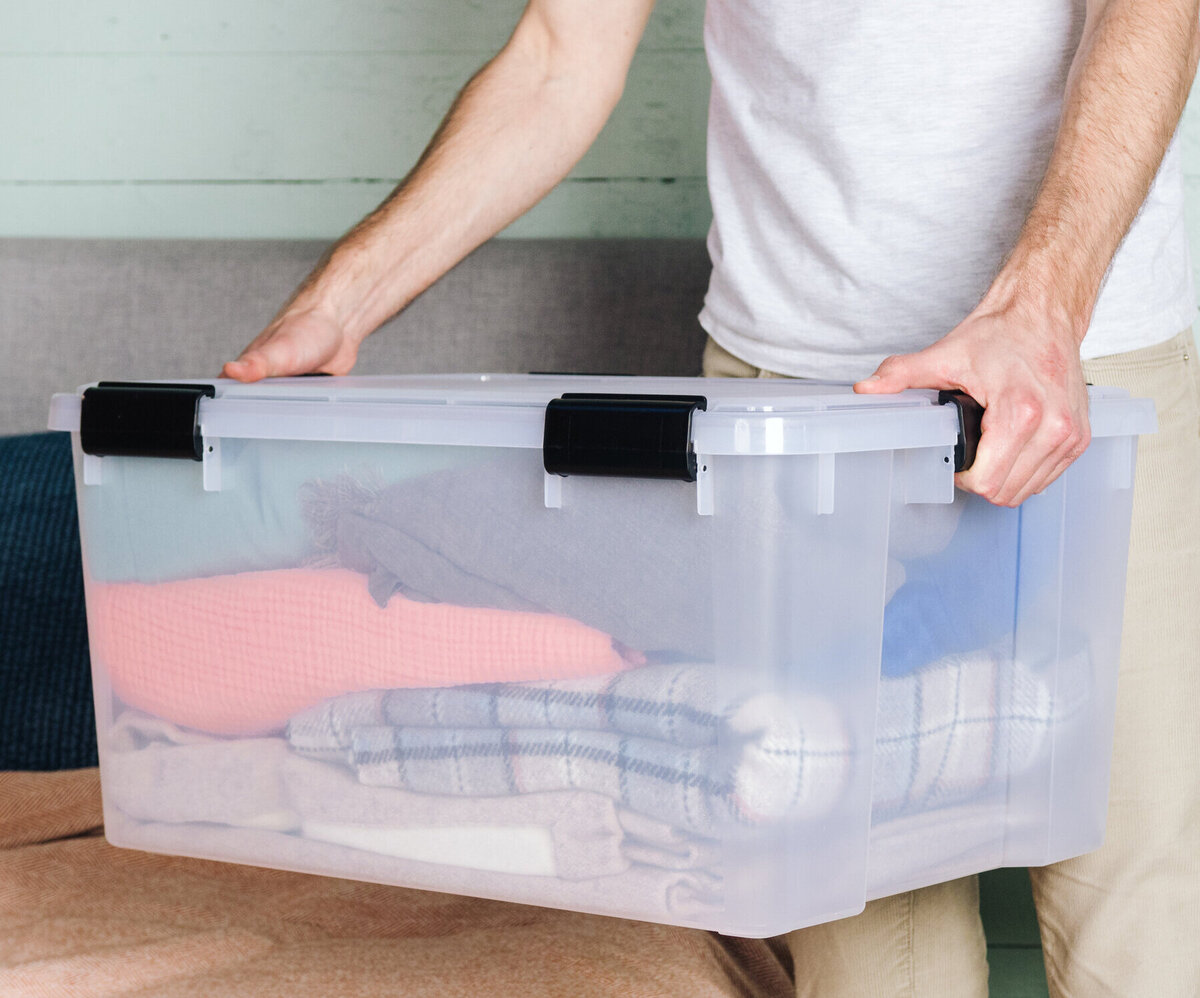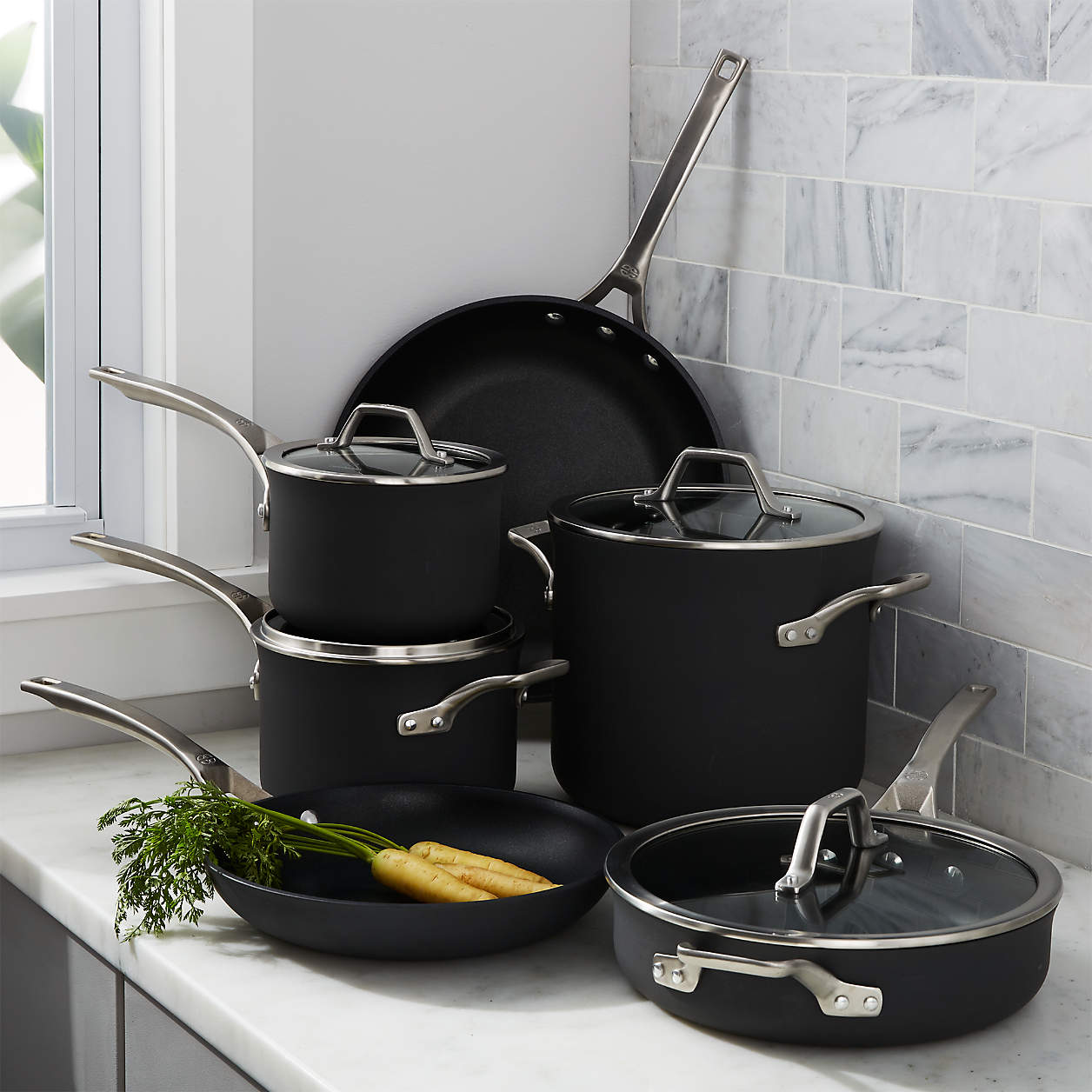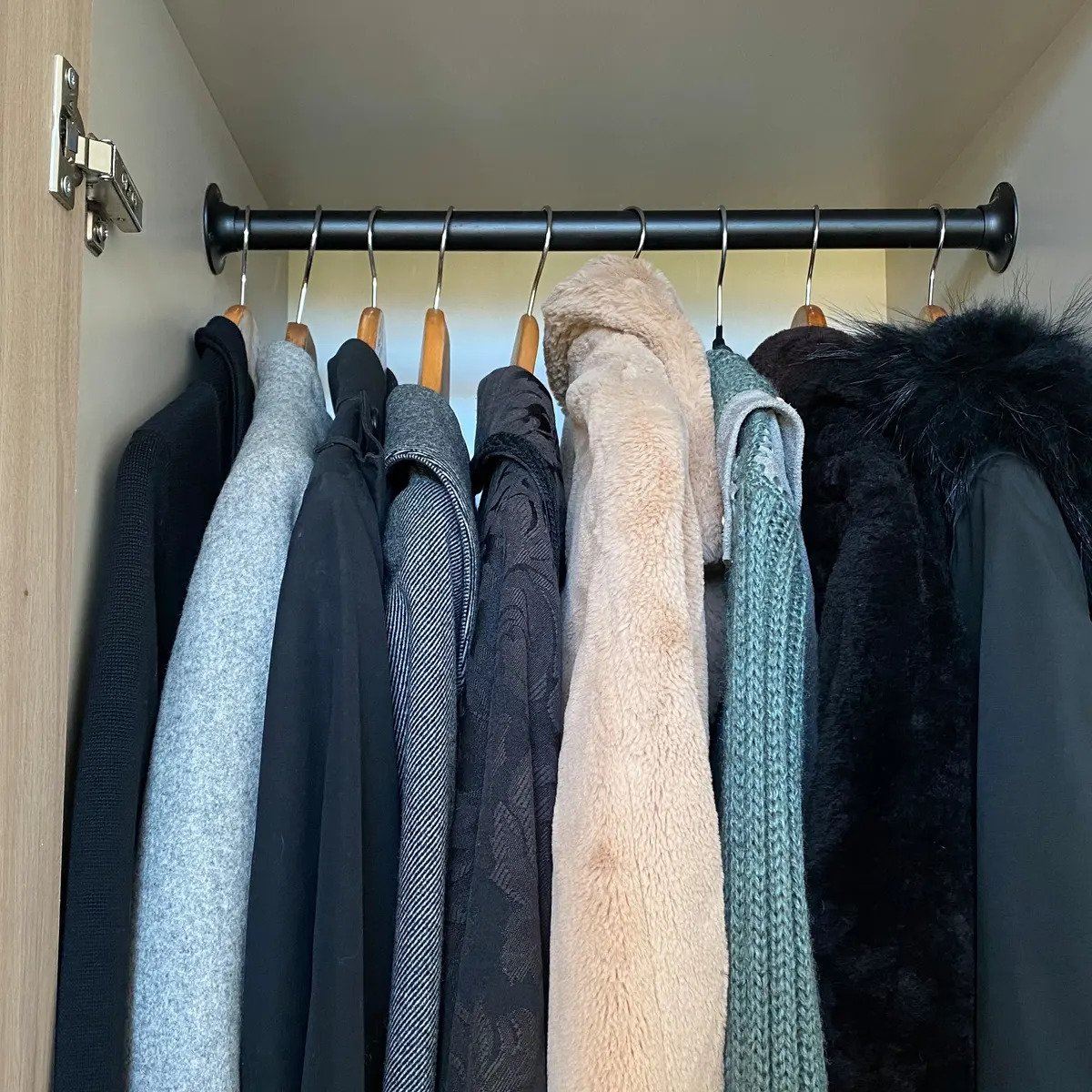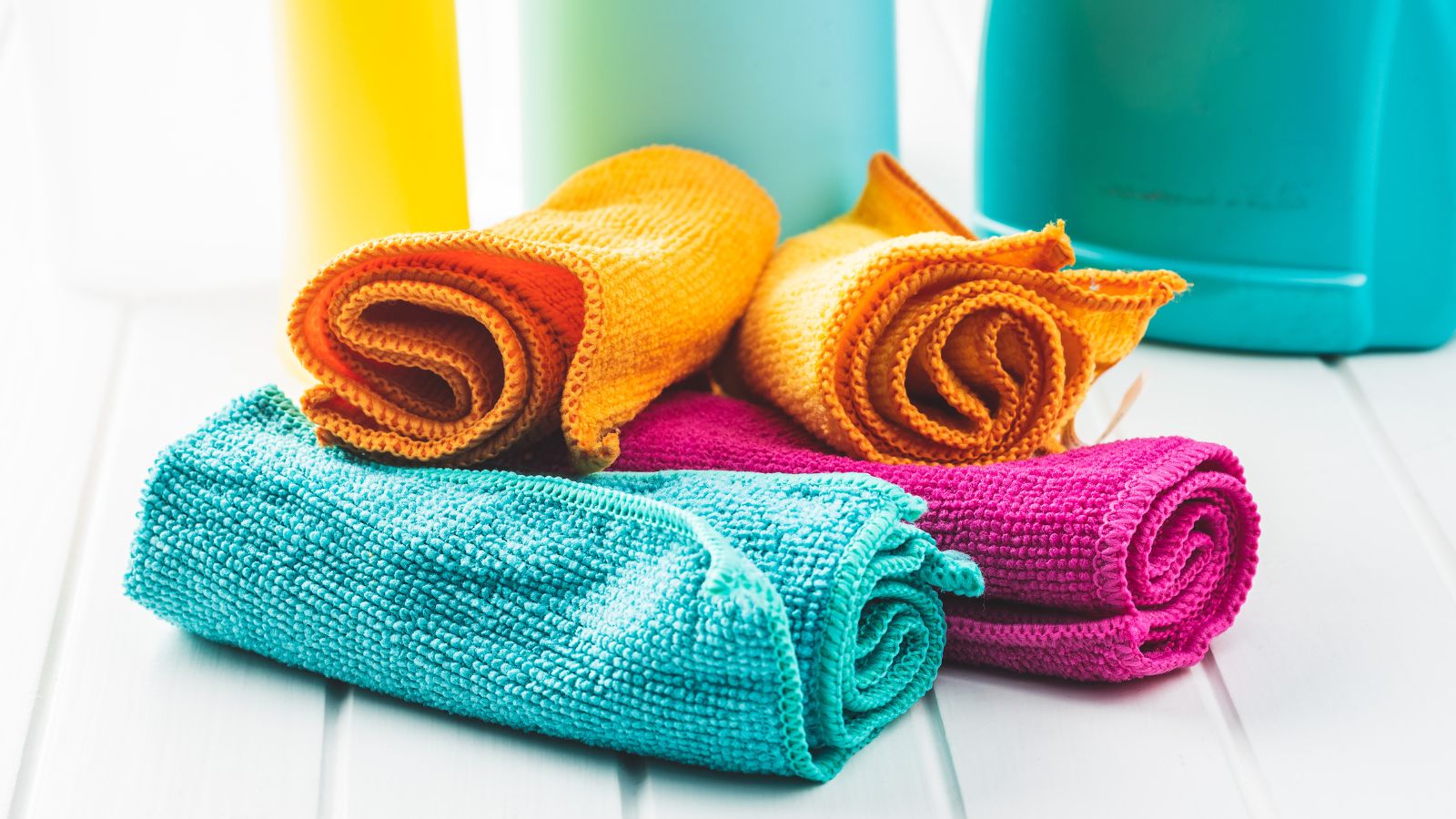Home>Articles>How To Store Clothes In Non Climate-Controlled Storage


Articles
How To Store Clothes In Non Climate-Controlled Storage
Modified: October 27, 2024
Learn the best ways to store your clothes in non climate-controlled storage units with our helpful articles. Keep your garments safe and protected with these storage tips.
(Many of the links in this article redirect to a specific reviewed product. Your purchase of these products through affiliate links helps to generate commission for Storables.com, at no extra cost. Learn more)
Introduction
When it comes to storing clothes, having a non climate-controlled storage unit can present some challenges. Fluctuations in temperature and humidity levels can potentially damage your clothing, leading to mildew, mold, or even irreversible fabric deterioration. However, with proper planning and organization, you can safely store your clothes in a non climate-controlled storage unit.
Whether you’re moving, downsizing, or simply looking for additional storage space, there are steps you can take to ensure your clothes remain in good condition while in storage. In this article, we’ll guide you through the process of storing clothes in a non climate-controlled storage unit, providing you with essential tips and tricks to keep your clothing safe and well-preserved.
Key Takeaways:
- Proper organization and preparation are key to storing clothes in non climate-controlled storage. Assess your storage needs, sort and clean your clothes, and choose the right storage containers to ensure their safety and preservation.
- Combat moisture, pests, and maintain your storage unit to safeguard your clothes. Use moisture absorbers, pest repellents, and regularly monitor the storage area to prevent damage and ensure the long-term preservation of your clothing items.
Assessing Your Storage Needs
Before you start packing your clothes for storage, it’s important to assess your storage needs. This will help you determine the amount of space you require and the type of storage containers that are suitable for your clothing items.
Begin by taking an inventory of your clothing collection. Sort through your clothes and decide which items you plan to store. Consider the different types of clothing you have, such as dresses, suits, jackets, sweaters, and accessories. Take note of any delicate or valuable items that may require special storage considerations.
Next, evaluate the quantity of clothing you have. Determine whether you need a small, medium, or large storage unit to accommodate your collection. Keep in mind that storing clothes in a non climate-controlled environment may require additional space to allow for proper air circulation.
Consider the seasonal nature of your clothing. If you are storing items that you won’t need for several months, such as winter coats or summer dresses, it may be more efficient to pack them away separately to free up immediate storage space.
Finally, think about the accessibility of your stored clothes. If you anticipate needing to retrieve certain items frequently, make sure they are easily accessible and not buried beneath other boxes or containers.
By carefully assessing your storage needs, you can plan and prepare accordingly, ensuring that your clothes are stored in a way that is both practical and efficient.
Sorting and Organizing Your Clothes
Once you have assessed your storage needs, it’s time to sort and organize your clothes before packing them away. This step is crucial for maximizing space, maintaining the condition of your clothing, and facilitating easy retrieval in the future.
Start by categorizing your clothes. Sort them into groups such as shirts, pants, dresses, and so on. This will make it easier to locate specific items when needed.
Next, consider organizing your clothes by season. Separate your summer and winter wardrobes, as you may not need access to both at the same time. This will help you streamline your storage and make it easier to rotate your clothing as the seasons change.
Within each category or season, you can further organize your clothes by color, style, or occasion. This will not only make it visually appealing but also enable you to find what you’re looking for more quickly.
As you sort and organize, take the time to declutter. Consider donating or selling any clothes that you no longer wear or need. This will not only free up space in your storage unit but also prevent your clothes from becoming overcrowded, which can lead to damage.
Finally, invest in quality storage solutions, such as sturdy plastic bins or vacuum-seal bags. These will not only protect your clothes from dust, pests, and moisture but also help maximize your storage space by optimizing the arrangement of your clothing items.
By sorting and organizing your clothes before packing them away, you’ll ensure that your storage unit is well-structured and your clothes are easily accessible whenever you need them.
Cleaning and Preparing Your Clothes for Storage
Before you pack your clothes for storage, it is essential to clean and prepare them properly. This will help prevent musty odors, stains, and potential damage caused by dirt or spills that may be present on your garments.
Start by thoroughly inspecting your clothes for stains, spots, or any visible dirt. Treat any stains or spots with appropriate stain removers or follow the care instructions provided on the garment. It is crucial to remove stains before storing the clothes, as they may become more difficult to remove later on.
After treating the stains, launder or dry-clean your clothes according to the manufacturer’s instructions. Make sure to use a mild detergent and avoid using fabric softeners, as they can attract pests or leave residue on the clothing.
While cleaning your clothes, take the time to properly dry them. Make sure they are completely dry before packing them away to prevent moisture-related issues such as mold or mildew. Hanging the clothes to air dry or using a low-temperature dryer setting are recommended methods.
In addition to cleaning, consider using protective measures to further prepare your clothes for storage. For example, inserting acid-free tissue paper between layers of delicate clothing can help alleviate creasing and ensure their preservation.
If you have hanging items such as dresses or suits, invest in sturdy garment bags. These bags will protect your clothes from dust and potential damage, while also allowing for easy transportation and rehanging when needed.
By thoroughly cleaning and properly preparing your clothes for storage, you will minimize the risk of damage and ensure that they remain in excellent condition until you are ready to wear them again.
Choosing the Right Storage Containers
When it comes to storing your clothes in a non climate-controlled environment, choosing the right storage containers is crucial. The containers you use should provide protection from dust, moisture, pests, and any other potential threats.
Here are some factors to consider when selecting storage containers for your clothes:
1. Material: Opt for storage containers made of durable and moisture-resistant materials, such as plastic or polypropylene. Avoid cardboard boxes as they can easily attract pests and are not as effective at safeguarding your clothes.
2. Size: Choose containers that are appropriately sized for your clothing items. Avoid overpacking the containers, as this can lead to excessive wrinkling or create unnecessary pressure on the fabric. Ensure there is enough space for proper air circulation.
3. Sealability: Look for containers with secure and airtight lids. This will help keep out dust, pests, and excessive moisture. Consider using containers with silicone gaskets or double-locking mechanisms for added protection.
4. Visibility: Opt for transparent or semi-transparent containers to easily identify the contents without having to open each one. This will help you find specific clothing items more efficiently.
5. Stackability: Choose containers that are designed to stack neatly on top of each other. This will maximize the use of vertical space in your storage unit, allowing you to store more clothing items while keeping them organized.
Remember to label each container with the contents or categories of clothing it holds. This will make it easier to locate specific items without having to open every container.
By carefully selecting the right storage containers, you can ensure that your clothes are safely and effectively protected from any potential risks during their time in storage.
Consider using vacuum-sealed bags to store clothes in non climate-controlled storage. This will help protect them from moisture, dust, and pests.
Clothing Storage Tips and Tricks
When it comes to storing your clothes in a non climate-controlled storage unit, there are some tips and tricks you can follow to ensure the safety and preservation of your clothing items. These strategies will help maintain the quality of your clothes and make the retrieval process easier when you need them.
1. Use silica gel packets: Place silica gel packets in your storage containers to help absorb excess moisture and prevent mold and mildew growth. Replace the packets periodically to ensure effectiveness.
2. Avoid plastic bags: While it may be tempting to use plastic bags to store your clothes, avoid doing so as they can trap moisture and cause mildew. Instead, opt for breathable storage solutions such as fabric garment bags or acid-free tissue paper.
3. Store seasonal clothes separately: If you have seasonal clothing items that won’t be used for an extended period, store them separately from your daily wear. This will help keep your storage area clutter-free and make it easier to locate specific items when needed.
4. Utilize wardrobe boxes: For hanging items such as dresses, suits, and coats, invest in wardrobe boxes. These boxes are designed with a built-in rod and are perfect for maintaining the shape and condition of your clothing during storage.
5. Fold clothes properly: When folding your clothes, try to minimize creases and wrinkles by following the natural lines of the garments. Smooth out any wrinkles and avoid folding clothes too tightly, as this can cause permanent creases.
6. Rotate your clothes: It is a good practice to periodically rotate your clothes in storage. This will help prevent excessive wear on specific items and ensure that all your clothes are used and enjoyed.
7. Avoid storing clothes in attics or basements: Attics and basements are more prone to temperature and humidity fluctuations, which can be detrimental to your clothes. If possible, choose a storage unit on an upper floor or in a more controlled environment.
8. Check on your clothes periodically: Make it a habit to check on your stored clothes periodically. This allows you to ensure that there are no signs of damage, pests, or moisture-related issues. If any issues arise, address them promptly to prevent further damage or deterioration.
By employing these clothing storage tips and tricks, you’ll be able to maintain the quality and condition of your clothes throughout their time in a non climate-controlled storage unit.
Dealing with Moisture and Humidity
Moisture and humidity are common concerns when storing clothes in a non climate-controlled environment. Excessive moisture can lead to mold, mildew, and even fabric deterioration. Here are some strategies to help you combat moisture and humidity in your storage space:
1. Choose a drier area: When selecting a storage unit, try to choose a space that is naturally drier and less prone to moisture buildup. Avoid areas near leaky pipes, drains, or areas with known humidity issues.
2. Use moisture absorbers: Place moisture-absorbing products such as desiccant packets or silica gel packets in your storage containers. These products help absorb excess moisture and maintain a drier environment within the containers.
3. Consider dehumidifiers: If your storage unit has access to electricity, you may want to consider using a dehumidifier. This device helps remove moisture from the air, maintaining a more controlled humidity level. Some dehumidifiers have built-in hygrometers to monitor and adjust humidity levels automatically.
4. Elevate your containers: Place your storage containers on pallets or shelves to prevent them from direct contact with the floor. This helps minimize the chance of moisture seeping into the containers from the ground.
5. Don’t store damp clothes: Ensure that all your clothes are completely dry before packing them for storage. Damp clothes can lead to a buildup of moisture in the storage containers, causing potential mold or mildew issues. If necessary, consider using a fan or air-drying your clothes for a longer period before storage.
6. Ventilate the storage unit: Good airflow is essential in minimizing moisture buildup. If possible, leave space between containers or open the storage unit periodically to allow for fresh air circulation. This can help regulate humidity levels and prevent stagnant, moisture-laden air.
7. Monitor and address any signs of moisture: Regularly inspect your storage area for any signs of moisture, such as condensation on windows or walls. If you notice any issues, address them promptly by adjusting ventilation, adding more moisture absorbers, or using a dehumidifier.
By implementing these measures to deal with moisture and humidity, you can greatly reduce the risk of damage to your stored clothes and ensure they remain in optimal condition throughout their time in storage.
Pest Prevention and Control
Pests such as insects and rodents can wreak havoc on your clothing items while in storage. To prevent and control pest infestations, it’s important to take proactive measures to safeguard your clothes. Here are some strategies for pest prevention and control:
1. Clean clothes before storage: Ensure that all your clothes are clean and free from any food stains or residues. Pests are attracted to the smell of food, so removing any potential food sources will discourage them from infesting your storage area.
2. Use mothballs or cedar products: Mothballs or cedar products have long been used as traditional methods to deter pests. Place mothballs or cedar blocks in your storage containers to help repel moths, ants, and other insects that may damage your clothes.
3. Utilize pest repellent sprays or sachets: There are many commercially available pest repellent sprays specifically designed for clothing storage. Spray these repellents around the storage area and inside the containers to create a barrier of protection against pests.
4. Close all entry points: Inspect the storage area for any cracks, crevices, or gaps that pests can use to enter. Seal these openings with caulk or weather-stripping to prevent pests from gaining access to your clothes.
5. Avoid using cardboard boxes: Cardboard boxes are more susceptible to pest invasions as pests can easily chew through them. Opt for sturdy plastic or metal containers with secure lids to keep pests out.
6. Regularly check for signs of pests: Conduct regular inspections of your storage area to look for any signs of pests, such as droppings, nests, or chewed fabric. If you notice any indications of an infestation, take immediate action to address the issue.
7. Consult with pest control professionals: If you’re dealing with a persistent pest problem, it may be necessary to consult with pest control professionals. They can assess the situation and provide effective treatments and preventive measures to eliminate the pests and protect your clothes.
By implementing these pest prevention and control strategies, you can safeguard your clothes from potential damage caused by pests while in storage.
Monitoring and Maintaining Your Storage Unit
Once you have properly organized and stored your clothes in a non climate-controlled storage unit, it’s important to regularly monitor and maintain the space to ensure the continued safety and integrity of your clothing items. Here are some tips for monitoring and maintaining your storage unit:
1. Regularly check the condition of your clothes: Make it a habit to inspect your stored clothes periodically. Look for any signs of damage, moisture, or pest infestations. By catching any issues early on, you can prevent further damage and take necessary actions to rectify the situation.
2. Maintain good airflow: Ventilation is crucial in preventing moisture buildup and maintaining a healthy storage environment. Avoid sealing your storage unit completely, as it can lead to stagnant air. Instead, leave some space for proper airflow or use a fan to circulate the air periodically.
3. Keep the storage area clean: Regularly clean the storage unit to minimize dust and dirt accumulation. Use a broom or vacuum cleaner to remove any debris, and wipe down surfaces with a damp cloth. A clean storage area will contribute to the overall preservation of your clothes.
4. Address any signs of moisture or leaks: If you notice any signs of moisture or leaks in your storage unit, take immediate action. Address the source of the moisture, repair any leaks, and consider using moisture-absorbing products or a dehumidifier to maintain a drier environment.
5. Reorganize and rotate your clothes: Occasionally reorganize your clothes in the storage unit to ensure proper airflow and prevent excessive pressure on specific items. Rotate your clothes as well to evenly distribute the wear and tear, especially for seasonal items that may not be accessed frequently.
6. Update your inventory: As you retrieve or add items to your storage unit, update your inventory list. This will help you keep track of what is stored and make it easier to find specific items when needed.
7. Maintain communication with the storage facility: If you have any concerns or questions about the storage unit or its conditions, communicate with the storage facility management. They can provide guidance and address any issues that may arise.
By actively monitoring and maintaining your storage unit, you can ensure the long-term preservation and safety of your clothing items. Regular inspections and maintenance will help you address any potential problems promptly and keep your clothes in optimal condition.
Read more: What Is Climate Control Air Conditioning
Conclusion
Storing your clothes in a non climate-controlled storage unit can seem daunting, but with the right strategies and precautions, you can successfully preserve your clothing items. By assessing your storage needs, sorting and organizing your clothes, cleaning and preparing them for storage, choosing the right storage containers, and implementing clothing storage tips and tricks, you can ensure the safety and protection of your clothes.
Dealing with moisture and humidity is a crucial aspect of clothing storage. Using moisture absorbers, elevating containers, and monitoring humidity levels can help prevent mold, mildew, and fabric damage. Additionally, taking measures to prevent and control pests, such as cleaning clothes before storage, utilizing repellents, and regularly inspecting for signs of infestations, will further safeguard your clothing items.
Remember to regularly monitor and maintain your storage unit. Check the condition of your clothes, maintain good airflow, keep the area clean, and address any moisture or leaks promptly. By staying vigilant and proactive, you can prevent potential issues and catch any problems early on.
With careful planning, organization, and the right storage techniques, you can successfully store your clothes in a non climate-controlled environment. Whether you’re storing seasonal clothing, sentimental garments, or simply creating more space in your home, these strategies will help preserve the quality and condition of your clothes until you’re ready to wear them again.
So go ahead and pack your clothes with confidence, knowing that you have taken the necessary steps to protect them in your non climate-controlled storage unit. By following these guidelines, you can store your clothes safely and efficiently, ensuring they remain in excellent condition for years to come.
Frequently Asked Questions about How To Store Clothes In Non Climate-Controlled Storage
Was this page helpful?
At Storables.com, we guarantee accurate and reliable information. Our content, validated by Expert Board Contributors, is crafted following stringent Editorial Policies. We're committed to providing you with well-researched, expert-backed insights for all your informational needs.














0 thoughts on “How To Store Clothes In Non Climate-Controlled Storage”